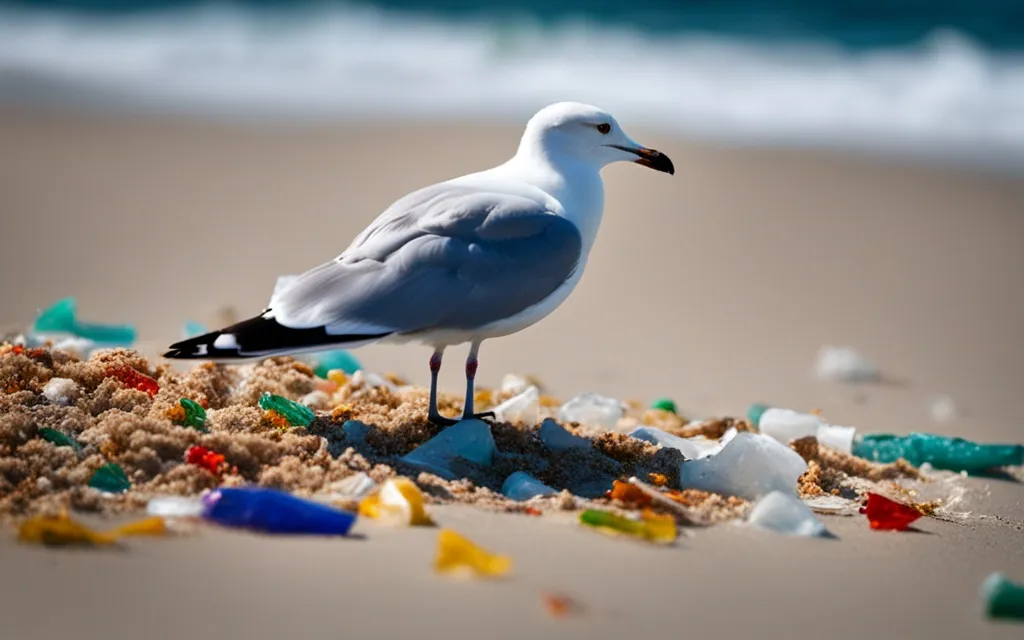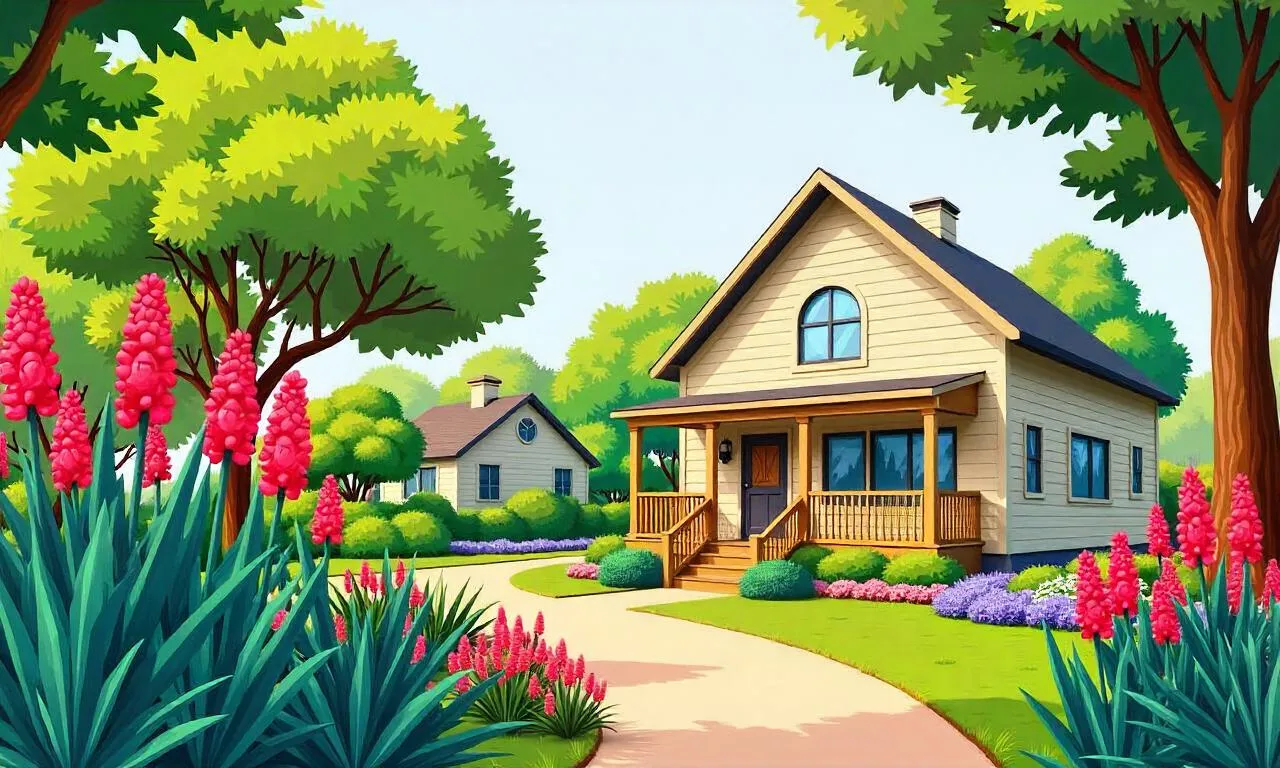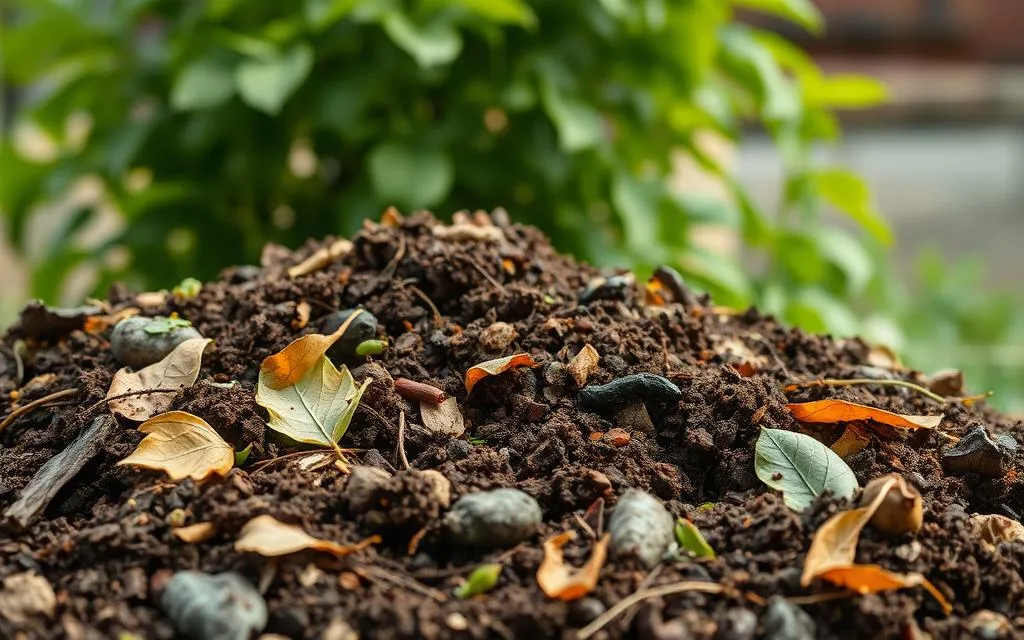Plastic pollution is a big problem for our planet. This article will look at how much plastic waste there is, why it’s a global issue, and its harm to marine life, soil, groundwater, and air quality.
Plastic is a big part of our lives today, but it’s hurting the environment. We make a lot of plastic waste that doesn’t break down easily. This problem needs our quick action. By understanding the issue better, we can find new ways to solve it and aim for a future without plastic.
This article will talk about the dangers of microplastics and how long plastic lasts in nature. We’ll also look at what people, governments, and companies can do to fix the plastic problem. Working together, we can make a big difference and give our planet a healthier future.
Table of Contents
ToggleUnderstanding the Impact of Plastic Pollution
The plastic pollution crisis is huge, and it’s clear how it affects our environment. Every year, about 8 million metric tons of plastic waste go into the oceans. This harms marine life and wildlife a lot.
Plastic pollution is a big problem worldwide, touching communities and environments everywhere. Many plastics come from things we use once and then throw away. These items, along with packaging and tiny plastics, add to the problem. Making and getting rid of plastic also releases greenhouse gases, making the climate crisis worse.
The Staggering Statistics on Plastic Waste
The amount of plastic pollution is huge. The World Wildlife Fund says we make over 380 million tons of plastic each year. But, only about 10% gets recycled. The rest goes to landfills, oceans, and nature, hurting ecosystems and animals.
Why Plastic Pollution is a Global Concern
Plastic pollution is a big issue that crosses borders and affects people everywhere. You can find plastic waste in the deepest ocean and the highest mountains. This shows we need strong actions to fix the plastic pollution problem.
| Plastic Pollution Statistic | Value |
|---|---|
| Estimated plastic waste entering oceans each year | 8 million metric tons |
| Global plastic production per year | over 380 million tons |
| Percentage of plastic waste that is recycled | less than 10% |
Detrimental Effects on Marine Life
Plastic pollution is a big threat to our ocean’s balance. Many marine animals eat plastic by mistake, from small fish to big predators. This can cause injury, starvation, and death for these creatures.
Ingestion of Plastic Debris by Marine Animals
Marine animals face big dangers from plastic pollution. They think plastic is food and eat it, which can block their stomachs. This stops them from getting the nutrients they need, leading to malnutrition and death.
Plastic pollution affects more than just animals. It goes up the food chain, harming entire ecosystems. This can make our oceans unstable and harm our planet’s health.
| Marine Animal | Plastic Ingestion Impact |
|---|---|
| Sea Turtles | Mistaking plastic bags for jellyfish, leading to intestinal blockages and suffocation |
| Seabirds | Feeding plastic to their chicks, causing starvation and internal damage |
| Fish | Consuming microplastics that can accumulate toxins and disrupt their feeding and reproductive processes |
Plastic pollution has a huge impact on marine life. We must act now to reduce plastic use and protect our oceans for the future.
Contamination of Soil and Groundwater
The problem of plastic pollution goes beyond our oceans. It also harms our soil and groundwater. This is a big issue we need to tackle.
Plastic waste on land can hurt soil quality. When plastic breaks down, it releases harmful chemicals and microplastics. These can get into the soil, harming plants and the creatures living there.
Also, plastic pollution can contaminate groundwater, our main source of clean water. Plastic waste can leak dangerous substances into the groundwater. This makes our drinking water unsafe and can affect the food we eat.
The effects of plastic pollution on land and water show how connected our environment is. By fighting plastic pollution, we protect our oceans, soil, and water. This ensures a healthy future for everyone.
| Type of Contamination | Causes | Potential Consequences |
|---|---|---|
| Soil Contamination | – Breakdown of plastic waste releasing chemicals and microplastics – Accumulation of plastic debris on land |
– Impaired plant growth – Reduced soil fertility – Harm to soil-dwelling organisms |
| Groundwater Contamination | – Leaching of hazardous substances from plastic waste into groundwater | – Contamination of drinking water sources – Spread of pollution to agricultural areas |
By tackling plastic pollution, we protect our oceans and our land and water. This is key to solving the problems caused by plastic waste.
Effects of Plastic Pollution on Environment
Plastic pollution has a huge impact on our environment. It reaches from the ocean depths to the ground we walk on. We must understand how plastic affects our planet to fix this problem.
Plastic harms marine life a lot. Many sea creatures, like whales and turtles, eat or get caught in plastic. This can kill them and harm the ocean’s balance, affecting many other animals too.
Plastic also pollutes soil and water. When plastic breaks down, it releases harmful chemicals. These can get into the soil and water, hurting plants and animals.
Plastic pollution affects more than just living things. Making and burning plastic also pollutes the air. This adds to climate change and makes the air unhealthy to breathe.
To fight plastic pollution, we need to do several things. We should use less plastic, improve how we handle waste, and aim for a plastic recycling economy. By doing this, we can lessen plastic’s harm and protect our planet.
Air Pollution Caused by Plastic Production
Plastic production has a big impact on the environment, not just from the plastic waste we see. The process of making plastic itself adds a lot to air pollution and greenhouse gases. Looking into how plastic manufacturing affects the environment shows us the real cost of using this material.
The Carbon Footprint of Plastic Manufacturing
The making and use of plastic are big causes of air pollution. Every step in the plastic life cycle, from getting raw materials to making and moving the final product, adds pollutants to the air. Burning fossil fuels to make most plastics is a big source of greenhouse gases, which hurts our climate.
Also, making plastic uses a lot of energy, which makes its carbon footprint even bigger. The chemicals released during these processes can harm air quality. This is bad for people’s health and the environment.
| Plastic Production Stage | Environmental Impact |
|---|---|
| Extraction of raw materials | Fossil fuel extraction, transportation, and processing contribute to air pollution and greenhouse gas emissions. |
| Plastic processing and manufacturing | Energy-intensive processes, such as melting and molding, release VOCs and other hazardous air pollutants. |
| Transportation and distribution | Fuel consumption from moving raw materials, intermediates, and final products adds to the carbon footprint. |
We need to tackle the big environmental problems caused by plastic production. Understanding how plastic affects air quality and the carbon footprint is key. By finding sustainable solutions, we can lessen the harm from plastic and protect our planet for the future.
Plastic’s Longevity and Environmental Persistence
The plastic pollution crisis is a major environmental challenge today. It’s worrying because plastic lasts for hundreds of years in nature. Even when it breaks down, it turns into microplastics that harm ecosystems.
Plastic doesn’t easily break down because it’s very durable. Its structure is made of long polymer chains. These chains help it resist weather, UV rays, and chemicals that would damage other materials. So, a plastic bottle or bag can stay in the environment for a very long time, polluting our land and water.
How long plastic takes to degrade is alarming. A plastic bottle might take 450 years to fully break down. A plastic bag could take 10 to 20 years. When plastic does start to break down, it doesn’t just go away. It turns into microplastics that are hard to clean up from the environment.
| Material | Degradation Timeline |
|---|---|
| Plastic Bottle | 450 years |
| Plastic Bag | 10-20 years |
| Styrofoam Cup | 500 years |
| Fishing Line | 600 years |
Plastic pollution lasts a long time and is a big problem worldwide. It harms ecosystems, animals, and human health. Knowing how long plastic lasts helps us find ways to stop this problem and protect our planet for the future.

Microplastics: A Hidden Threat
Microplastics have become a big problem for our environment. These tiny plastics are less than 5 millimeters big and hard to see. But they can harm our ecosystems and even get into our food. It’s important to know how they come about and how they affect our world.
How Microplastics Enter the Food Chain
Microplastics come from things like synthetic clothes, personal care items, and old plastic breaking down. They end up in our water and soil. Then, many animals eat them, from tiny sea creatures to big fish. This can hurt the health of our whole ecosystem.
Research shows microplastics are in many foods, like seafood, salt, and even drinking water. Eating these plastics might be bad for our health. It could mess with our hormones and might cause some diseases.
| Microplastics Source | Environmental Impact | Potential Health Effects |
|---|---|---|
| Synthetic Textiles | Polluting waterways and harming aquatic life | Potential disruption of endocrine system |
| Personal Care Products | Contaminating soil and groundwater | Possible carcinogenic and mutagenic effects |
| Breakdown of Larger Plastics | Accumulating in food chain and ecosystems | Potential link to various health issues |
We need to tackle microplastics from many angles. This means using fewer single-use plastics, supporting new waste management ideas, and recycling more. Everyone can help fight microplastics and keep our planet and its life safe.
Addressing the Plastic Crisis: Reducing Our Reliance
We need to act fast to solve the global plastic pollution crisis. We should cut down on single-use plastics. By using new solutions and pushing for a circular economy for plastics, we can make a change. This way, plastic waste gets reused and recycled, not thrown away.
Promoting a Circular Economy for Plastics
A circular economy for plastics means making products that can be fixed, reused, or recycled. This method keeps plastic materials moving, cutting down on new plastic production and its harm to the environment. Everyone – governments, companies, and people – must work together to make this happen. This includes changing policies, designing better products, and using things wisely.
We need to invest in better plastic waste collection, sorting, and recycling. This boosts recycling rates and cuts down on plastic in landfills, oceans, and nature. Encouraging the use of recycled plastics in making new products and supporting product programs can also help.

















